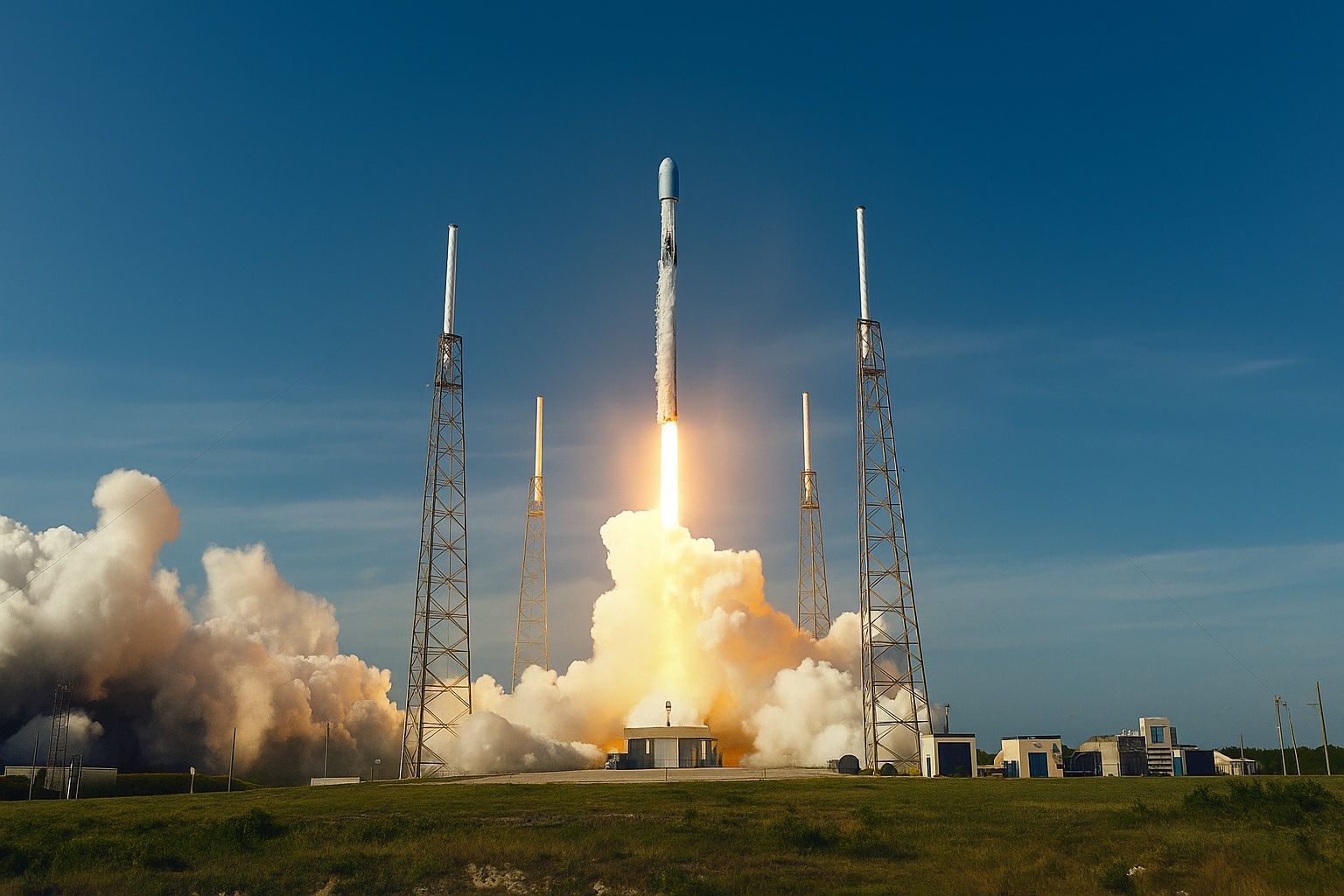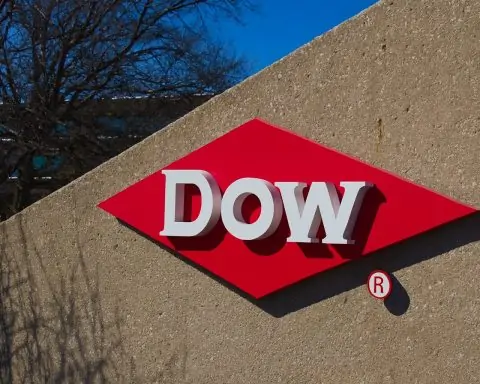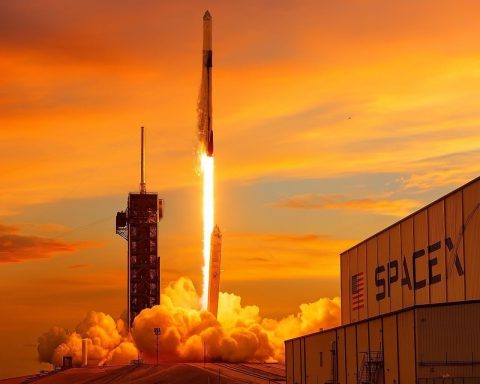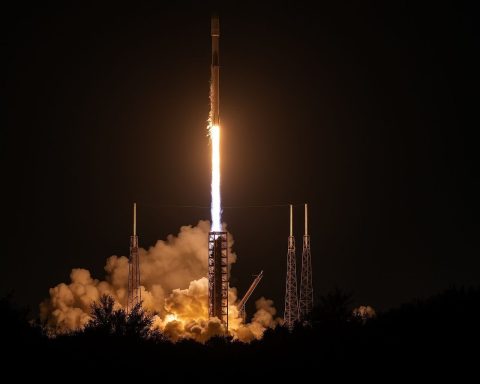- In June 2025, Texas approved a provision granting Starbase authority to close State Highway 4 and Boca Chica Beach during launches, transferring that power from county authorities to SpaceX-aligned Starbase officials.
- The FAA raised SpaceX’s Starbase launch-permit cap from 5 to 25 launches per year.
- On June 16, 2025, a Falcon 9 from Vandenberg (VSFB) carried 26 Starlink v2 Mini satellites to orbit and landed its booster on the Pacific drone ship.
- On June 18, 2025, a Falcon 9 from Cape Canaveral (CCSFS) lofted 28 Starlink v2 Minis on a rare northeast trajectory, with the booster downrange landing in the Atlantic.
- SpaceX is pursuing a cadence of 170 Falcon launches in 2025.
- On June 23, 2025, SpaceX conducted a two-flight day: a Starlink mission from Florida at 1:58 AM EDT and the Transporter-14 rideshare from Vandenberg’s SLC-4E at 2:18 PM PDT, carrying 45+ small satellites and technology demos, plus two reentry capsules—the Varda Space W-4 capsule for pharmaceutical manufacturing and The Exploration Company’s Celestis ‘Perseverance’ memorial with 100 ashes—and the booster landed on the Pacific drone ship ‘Of Course I Still Love You’.
- ULA’s KA-02 mission is scheduled for June 23, 2025, using an Atlas V 551 rocket from SLC-41 at Cape Canaveral to deploy 27 Kuiper satellites into low Earth orbit, the second Kuiper batch after KA-01, delayed from June 16 due to an elevated gaseous nitrogen purge line temperature.
- Blue Origin attempted NS-33, the 13th human flight on New Shepard from Launch Site One in West Texas, carrying six spaceflight participants; high winds forced scrubs on June 21 and June 22, 2025.
- Honda on June 17, 2025 conducted a surprise test at Taiki, Hokkaido of a 6.3-meter-tall reusable rocket prototype that reached 271 meters altitude and completed a propulsive landing.
- Axiom Space’s Ax-4 mission, originally planned for June 22, 2025 with SpaceX Crew Dragon Dragon C213 and Peggy Whitson, was postponed indefinitely after a June 10 Falcon 9 LOX leak on booster B1094 and a Zvezda cooling-loop leak on the ISS, with the crew expected for a two-week stay and 60+ experiments.
SpaceX’s Starbase and Texas Infrastructure Updates
Recent policy changes in Texas are shaping SpaceX’s launch operations at Starbase (Boca Chica). In June 2025, Texas lawmakers approved measures giving the newly incorporated city of Starbase – effectively a SpaceX company town – authority to close public roads and beaches for rocket activity [1] [2]. This allows Starbase officials to shut down State Highway 4 and Boca Chica Beach during launches or tests, shifting that power away from county authorities to city commissioners closely tied to SpaceX [3] [4]. Local activists and indigenous groups opposed the bill, arguing it would curtail public beach access and benefit “the people in the company town” over the general public [5] [6]. Despite objections, the provision passed as part of a broader Texas Space Commission bill, marking a win for SpaceX’s operations. The FAA has already increased SpaceX’s permitted launches at Starbase from 5 to 25 per year [7], and with the new law, SpaceX’s Starbase launches can proceed with fewer local hurdles – a development to watch as the company ramps up Starship test flights.
SpaceX Launch Highlights: Starlink, Rideshares and Double-Headers
SpaceX continues its rapid launch cadence in 2025, frequently launching Falcon 9 rockets from both coasts. Multiple Starlink missions are deploying dozens of internet satellites at a time, often on reused boosters. For example, a Falcon 9 from Vandenberg (VSFB) on June 16 carried 26 Starlink v2 Mini satellites into orbit, with the booster landing on the Pacific droneship. Impressively, the evening launch was visible across Southern California and even Arizona, creating a spectacle in the twilight sky [8]. Just two days later, another Falcon 9 from Florida’s Cape Canaveral (CCSFS) lofted 28 Starlink v2 Minis on June 18, flying a rare northeast trajectory and landing its booster downrange in the Atlantic [9]. These Starlink deployments are part of SpaceX’s push to 170 Falcon launches in 2025, an ambitious goal underpinning its dominance in commercial spaceflight [10].
SpaceX is also executing double-header launch days. On June 23, 2025, the company aimed to perform two Falcon 9 launches within about 12 hours – a Starlink mission from Florida in the early morning, followed by a rideshare mission from California that afternoon [11] [12]. The morning mission (Starlink Group 10-23) lifted off from SLC-40 at 1:58 AM EDT and successfully delivered its satellite batch after a brief scrub the day prior [13]. Later that day, the Transporter-14 rideshare mission launched from Vandenberg’s SLC-4E at 2:18 PM PDT, after a 24-hour weather delay due to high winds [14]. This mission carried a mixed payload of 45+ small satellites and technology demos for dozens of customers, coordinated by Exolaunch of Germany [15] [16]. Notably, two reentry capsules were aboard: one by Varda Space (W-4) to manufacture pharmaceuticals in microgravity, and another by The Exploration Company carrying Celestis Inc.’s “Perseverance” memorial payload with DNA samples and the cremated remains of 100 people [17] [18]. The memorial capsule (called Nyx on “Mission Possible”) is a prototype that orbited Earth for a few hours before returning to deliver the ashes back to families as spaceflight keepsakes [19]. The booster for Transporter-14, after lofting this diverse payload set to Sun-synchronous orbit, was landed on the drone ship “Of Course I Still Love You” in the Pacific, as SpaceX opted for an offshore recovery instead of a return-to-launch-site landing due to performance needs [20] [21]. Overall, SpaceX’s launch manifest remains packed – including upcoming crewed flights (see Axiom-4 below) – solidifying a pace of rapid launches that is unprecedented in the industry.
ULA and Amazon’s Project Kuiper Satellite Launches
United Launch Alliance (ULA) is gearing up to launch satellites for Amazon’s Project Kuiper, a rival broadband megaconstellation. ULA’s next mission – designated Project Kuiper KA-02 – is scheduled for June 23, 2025, using an Atlas V 551 rocket from SLC-41 at Cape Canaveral [22]. This heavy-lift Atlas V will deploy 27 Kuiper satellites into low Earth orbit on that flight [23]. It represents the second batch of operational Kuiper satellites, after a first launch (KA-01) earlier in the spring. The KA-02 launch was delayed from June 16 due to technical issues: ULA halted the countdown after noticing an elevated gaseous nitrogen purge line temperature in the booster’s engine section, a problem that couldn’t be resolved in time [24]. ULA CEO Tory Bruno indicated the team stood down out of caution, and the launch was rescheduled once the purge line issue and unstable weather were addressed [25] [26].
When it flies, this mission will mark the second Atlas V launch of 2025 as ULA works through its remaining Atlas inventory before retirement [27]. Amazon has contracted dozens of launches with ULA (on Atlas V and the upcoming Vulcan) as well as other providers (Blue Origin’s New Glenn, Arianespace Ariane 6, and SpaceX) to deploy the 3,200+ satellite Kuiper constellation on a tight timeline [28] [29]. Notably, Amazon’s plan calls for as many as 81 satellites per month at peak deployment, in batches of 27, to reach an initial 578-satellite network by mid-2026 [30]. The success of ULA’s Atlas V flights for Kuiper will be crucial in demonstrating progress, especially as Vulcan Centaur’s schedule has encountered delays. If all goes to plan, the June 23 Atlas V launch will give Amazon a major boost in populating its Kuiper system to start piloting service in the near future.
Blue Origin’s Sub-Orbital Launch (NS-33) and Weather Scrubs
Blue Origin is returning to crewed sub-orbital flights with its New Shepard rocket, aiming to fly mission NS-33 – the company’s 13th human spaceflight – from Launch Site One in West Texas. The NS-33 mission, carrying six spaceflight participants (tourists and guest flyers), was targeting liftoff on June 21, 2025 [31]. However, high winds and weather forced multiple scrubs. On the morning of June 21, Blue Origin had to egress the crew and stand down due to persistent high winds at the pad and aloft [32]. A second attempt on June 22 was also scrubbed for weather as storms approached, despite the team’s hope for a 7:30 AM CDT window [33]. As of June 22, the company stated it was assessing the next launch opportunity and watching weather developments closely [34] [35].
The NS-33 crew includes Allie and Carl Kuehner (a husband-and-wife pair of conservationists), plus four other individuals with backgrounds ranging from business to law – reflecting Blue Origin’s trend of flying philanthropic or sponsored citizens alongside paying customers [36]. They have all been training and were certified “ready to fly” by Blue Origin’s team [37]. Once launched, New Shepard will shoot the capsule above the Kármán line (~100 km) for a few minutes of weightlessness and stunning Earth views before returning to ground under parachutes. Blue Origin has safely flown over a dozen crews to space so far, and NS-33 will resume its tourism missions after a hiatus. The back-to-back scrubs, while disappointing to the crew and onlookers, underscore the priority on safety. Blue Origin will likely attempt the launch again in the coming days when conditions improve. Would-be spectators in West Texas should stay tuned to Blue Origin’s updates, as the launch could slip day-by-day until favorable weather emerges [38]. This sub-orbital flight – whenever it occurs – will be an important milestone as Blue Origin works to increase its flight rate and recover from a 2022 uncrewed mishap that had paused New Shepard flights.
Rocket Lab: High Winds Delay Electron Launch
Small launcher Rocket Lab faced its own weather challenge in June. The company had planned an Electron rocket launch from its Mahia Peninsula pad in New Zealand for Friday, June 20. However, strong upper-level winds forced a scrub of that attempt [39]. Rocket Lab confirmed that due to persistent high winds at Launch Complex 1, the mission (which was carrying a commercial payload) had to be postponed beyond that week [40]. The launch team stood down to await a better weather window, as safety for the rocket and payload is paramount when wind shear could threaten the ascent. This particular delay is a reminder that even relatively small rockets are not immune to big weather – coastal NZ can be unforgiving in winter. Rocket Lab will reschedule the launch, likely giving 24-48 hours notice once conditions settle.
On a brighter note, Rocket Lab successfully completed its 66th Electron mission earlier in the month, on June 11. That launch (cheekily named “The Mountain God Guards”) delivered a 100-kg QPS SAR imaging satellite for a Japanese customer (iQPS) into a 575 km orbit [41] [42]. It was the third Electron launch in just over a month for that customer’s constellation. The company’s cadence is solid, and they continue to expand capabilities (such as attempts to recover boosters). With the June 20 scrub, Rocket Lab avoided risk and chose the prudent path – a short delay now ensures a higher chance of success when the Electron ultimately lifts off. High-altitude winds are a common cause for scrubs across launch providers, and Rocket Lab’s team will be analyzing weather data to pick the next target date. If you’re following the mission, keep an eye on Rocket Lab’s official social media for updates on the new T-zero.
Honda’s Surprise Reusable Rocket Test Success
In an intriguing crossover between automotive and aerospace, Honda has made news by successfully testing a reusable rocket prototype. On June 17, 2025, Honda’s R&D division conducted an unannounced launch and landing experiment at the spaceport in Taiki, Hokkaido (northern Japan) [43]. The small prototype rocket (about 6.3 meters tall) took off and reached 271 meters altitude, then descended and made a propulsive landing back on the pad [44]. This marked the first time Honda achieved a rocket landing after liftoff – a major milestone in its exploratory spaceflight program. The company had quietly been researching reusable rocket technology since 2021, but details were kept under wraps until this surprise test [45] [46].
Honda says the test achieved all intended objectives for launch and landing behaviors, validating key systems on a small scale [47]. While this experimental vehicle is sub-scale (reaching under 300 m), the implications are big: Honda is aiming to develop a fully reusable suborbital rocket by 2029, with longer-term goals of perhaps entering the small satellite launch market [48] [49]. The company emphasized that no decision has been made on commercialization yet – for now it’s still R&D – but the idea is that Honda’s expertise in guidance, propulsion, and mass production could eventually translate into competitive launch services [50]. Analysts note that reusable rockets have revolutionized the launch industry thanks to SpaceX, and now other players (Blue Origin, startups in China and Europe, and legacy companies) are all pursuing similar technology [51]. Honda’s success at vertically landing a test rocket on its first try puts it on the map in this arena. It joins a broader trend in Japan, where both governmental support and private investment (even from Toyota, Honda’s rival) are flowing into space ventures [52]. Keep an eye on Honda’s next steps – while a car manufacturer might seem like an unlikely rocket company, this test shows Honda is serious about entering the space launch sector with innovative, reusable designs.
Lockheed Martin & U.S. Space Force Launch New GPS Satellite
Global navigation just got a boost: on May 30, 2025, a SpaceX Falcon 9 launched the newest GPS III satellite for the U.S. Space Force. The satellite, built by Lockheed Martin, is GPS III SV-08 (also called GPS III-7 in sequence) and it rode to orbit from Cape Canaveral’s SLC-40 at 1:37 PM EDT [53]. SpaceX managed to thread the needle between Florida thunderstorms that afternoon, and the Falcon 9 lifted off at the end of its short window, successfully deploying the GPS spacecraft into Medium Earth Orbit [54]. The reusable first stage (booster B1092) then landed on the droneship “A Shortfall of Gravitas” – this being the booster’s 4th flight, showing SpaceX’s reusability even for military missions [55].
This launch is noteworthy for more than just the routine accuracy of a GPS deployment. It was executed on a rapid timeline as part of the Space Force’s effort to demonstrate responsive launch capability. In fact, the previous GPS III mission (SV-07 “Trailblazer”) had already broken ground by going from contract to launch in about 5 months, after a switch from ULA’s delayed Vulcan rocket to Falcon 9 [56]. Now with SV-08, the Space Force further shortened the turnaround to just over 3 months from the satellite’s call-up to its launch [57] [58]. “We looked at ourselves and said, ‘We can do better,’” Col. Andrew Menschner of Space Systems Command remarked, highlighting that the team improved the prep timeline from five months down to roughly three [59]. Lockheed Martin got the notification in late February to take SV-08 out of storage, and SpaceX was alerted in early March to be ready – and by end of May the bird was flying [60] [61]. This rapid launch cadence for GPS is a strategic capability: it means new encrypted GPS III satellites (with improved anti-jam and accuracy features) can be deployed faster to modernize the constellation [62] [63]. Space Force officials noted that such speed could be crucial if older satellites fail or if new capabilities are needed quickly [64] [65]. The May 30 launch was the 8th GPS III satellite in orbit, and SpaceX’s role in launching these (they’ve launched several now) underscores how commercial providers are enabling military goals on tight schedules [66] [67]. With this mission, SpaceX also proved its ability to integrate, fuel, and launch a national security payload in record time – a positive sign for future rapid-response launches. The next GPS III missions (SV-09 and SV-10) are slated to go up on ULA’s Vulcan once it’s ready [68] [69], but SpaceX has set a high bar in the interim. The GPS III SV-08 is now undergoing checkouts in orbit and will soon join the operational GPS constellation, benefitting billions of users who rely on precise navigation signals every day.
China’s Latest Launch: Zhongxing-9C Communications Satellite
China’s space program remains very active, with a notable recent launch being the Zhongxing-9C satellite (ChinaSat-9C). On June 20, 2025, China’s Long March 3B/E rocket thundered off the pad at Xichang Satellite Launch Center at 12:37 UTC, carrying Zhongxing-9C toward geostationary orbit [70]. The CZ-3B/E is a heavy-lift workhorse for GTO missions, and it performed flawlessly, injecting the satellite into a geosynchronous transfer orbit after an eastward launch trajectory from Xichang’s LC-3 [71]. Zhongxing-9C is a communications satellite intended primarily for television broadcast services – internationally it’s known as ChinaSat-9C. It will slot into China’s fleet of state-owned comms satellites, replacing the original ChinaSat-9, which was launched 17 years ago in 2008 [72] [73]. The new satellite sports more modern transponders to provide direct-to-home TV signals and other media services across China and possibly the Asia-Pacific region.
This mission was China’s only orbital launch of that week, but it adds to an already busy 2025 schedule for the CNSA and Chinese commercial launch providers. It was the 10th launch of a Long March-3 series rocket in 2025 [74], reflecting the high tempo of Chinese launch activity. So far, the Long March 3B family has a long heritage (this flight was the 169th LM-3 series mission to date) and is frequently used for communications satellites heading to GEO or GSO orbits [75]. Alongside Zhongxing-9C, China has been launching research satellites and planning for interplanetary missions (a Tianwen-2 asteroid sample mission launched in May). The successful deployment of ChinaSat-9C will ensure continuity of broadcast coverage, especially important with major global sporting events on the horizon and an ever-growing demand for satellite TV in rural areas. For skywatchers, the launch occurred late night China time, so it wasn’t easily visible to the public, but those tracking maritime notices knew to expect a spent Long March booster drop in the South China Sea. China’s next launches will include more national security payloads and science missions, as the country maintains a robust pace in the second half of 2025.
Private Astronaut Mission Update: Axiom Space’s Ax-4
In the realm of human spaceflight, Axiom Space is preparing for its next private mission to the International Space Station – but not without a few delays. Axiom Mission 4 (Ax-4) was originally slated to launch in mid-June 2025 (targeting June 22) on a SpaceX Crew Dragon, but it has been postponed indefinitely due to technical issues on both the launch vehicle and the ISS. During a routine static fire on June 10, SpaceX detected a liquid oxygen leak in the Falcon 9 first stage’s engine bay – a similar leak had been seen (and supposedly fixed) after that booster’s previous flight, so engineers took it seriously [76]. While SpaceX investigated and stood down the rocket, an unrelated problem cropped up on the ISS: a new leak was discovered in the Russian Zvezda service module’s cooling loop [77]. Given the timing, NASA and Axiom decided to delay Ax-4’s launch until the Zvezda issue could be understood in partnership with Roscosmos, rather than send a private crew up to a potentially compromised station environment [78].
Ax-4 is a high-profile mission: it will be the 7th private astronaut flight on Dragon (including Inspiration4 and others) and the 4th fully-commercial crewed trip to the ISS under Axiom’s agreement. The crew is commanded by Peggy Whitson, former NASA astronaut and now Axiom’s director of human spaceflight, who famously has spent more time in space (cumulatively) than any other American [79]. This will be Whitson’s second spaceflight with Axiom (she led Ax-2 in 2023), and it will debut a brand-new Crew Dragon capsule (Dragon C213), which the crew will get to name once on orbit [80]. Flying alongside Whitson are three international private astronauts: Shubhanshu Shukla from India (an ISRO-selected astronaut, serving as pilot), Sławosz Uznański from Poland (mission specialist, via ESA), and Tibor Kapu from Hungary (mission specialist, via ESA) [81]. Notably, each of those countries will see their second-ever astronaut fly on Ax-4 – Shukla will be India’s first person in space since 1984, Uznański the first Pole in orbit since 1978, and Kapu the first Hungarian since 1980 [82]. The mission is set for a two-week stay on the ISS, during which the crew plans to conduct over 60 research experiments ranging from human health and microgravity science to technology demonstrations for Axiom and international partners [83] [84]. It’s also the last new Crew Dragon that SpaceX will build; Dragon C213 is expected to be the final capsule off the production line for now, as SpaceX shifts focus to reusing the existing fleet and developing Starship for crewed missions [85].
When Ax-4 does launch (from LC-39A at Kennedy Space Center), it will ride Falcon 9 booster B1094, which is planned to perform a return-to-launch-site landing at LZ-1 due to the relatively light payload of a Dragon capsule [86]. That booster only flew once before (on a Starlink mission 42 days prior to the originally intended Ax-4 date) [87], so it’s fairly new and in good condition. All these preparations are in place; now it’s a matter of waiting for the “all clear.” A new launch date will depend on resolving the ISS module leak and confirming the Falcon 9’s issue is fixed – mission managers have not yet announced a target, but it’s likely to slip to later in the summer of 2025. For space enthusiasts, Ax-4 will be worth the wait: it’s a mission of many firsts and finales (a new Dragon, a last Dragon, new national astronauts, and Peggy Whitson extending her space-time record [88]), and it continues the march toward commercial space stations. Axiom Space plans to attach its first module to the ISS by mid/late 2020s, and these precursor missions help pave the way. Once launched, Ax-4 will also set a record for the most research activities on a single Axiom mission to date, reflecting a maturing focus on science in private astronaut flights [89]. We’ll be watching for the new schedule – whenever Dragon and crew get the green light, they will embark on a groundbreaking journey.
Sources: Detailed information was compiled from recent news and official updates, including Texas Tribune (Starbase closures) [90] [91], NASASpaceFlight and Spaceflight Now (launch coverage of SpaceX, ULA, Rocket Lab, Axiom) [92] [93] [94] [95], Blue Origin’s official updates (NS-33 status) [96] [97], Reuters (Honda rocket test) [98] [99], and other cited sources above for each specific mission and development. This report provides an up-to-date overview of global rocket launch activities and what to expect in the coming weeks in the ever-busy space sector. Each development – from SpaceX’s launch blitz and rideshare innovations, to ULA’s Amazon partnership, Blue Origin’s suborbital tourism, Rocket Lab’s steady progress, new entrants like Honda, international efforts in navigation (GPS) and communications (ChinaSat), and the advent of private ISS missions – highlights the dynamic, worldwide expansion of spaceflight in mid-2025. 🚀 [100] [101]
References
1. www.texastribune.org, 2. www.texastribune.org, 3. www.texastribune.org, 4. www.texastribune.org, 5. www.texastribune.org, 6. www.texastribune.org, 7. www.texastribune.org, 8. www.nasaspaceflight.com, 9. www.nasaspaceflight.com, 10. www.nasaspaceflight.com, 11. www.nasaspaceflight.com, 12. www.nasaspaceflight.com, 13. www.nasaspaceflight.com, 14. www.nasaspaceflight.com, 15. www.nasaspaceflight.com, 16. www.nasaspaceflight.com, 17. www.nasaspaceflight.com, 18. www.nasaspaceflight.com, 19. www.nasaspaceflight.com, 20. www.nasaspaceflight.com, 21. www.nasaspaceflight.com, 22. www.nasaspaceflight.com, 23. www.nasaspaceflight.com, 24. www.nasaspaceflight.com, 25. www.nasaspaceflight.com, 26. www.nasaspaceflight.com, 27. www.nasaspaceflight.com, 28. www.nasaspaceflight.com, 29. www.nasaspaceflight.com, 30. www.nasaspaceflight.com, 31. www.blueorigin.com, 32. www.blueorigin.com, 33. www.blueorigin.com, 34. www.blueorigin.com, 35. www.blueorigin.com, 36. www.blueorigin.com, 37. www.blueorigin.com, 38. www.blueorigin.com, 39. www.nasaspaceflight.com, 40. www.nasaspaceflight.com, 41. www.nasaspaceflight.com, 42. www.nasaspaceflight.com, 43. www.reuters.com, 44. www.reuters.com, 45. www.reuters.com, 46. www.reuters.com, 47. www.reuters.com, 48. www.reuters.com, 49. www.reuters.com, 50. www.reuters.com, 51. www.reuters.com, 52. www.reuters.com, 53. spaceflightnow.com, 54. spaceflightnow.com, 55. spaceflightnow.com, 56. spaceflightnow.com, 57. spaceflightnow.com, 58. spaceflightnow.com, 59. spaceflightnow.com, 60. spaceflightnow.com, 61. spaceflightnow.com, 62. www.defensenews.com, 63. www.airandspaceforces.com, 64. spaceflightnow.com, 65. spaceflightnow.com, 66. spaceflightnow.com, 67. executivegov.com, 68. spaceflightnow.com, 69. spaceflightnow.com, 70. www.nasaspaceflight.com, 71. www.nasaspaceflight.com, 72. www.nasaspaceflight.com, 73. www.nasaspaceflight.com, 74. www.nasaspaceflight.com, 75. www.nasaspaceflight.com, 76. www.nasaspaceflight.com, 77. www.nasaspaceflight.com, 78. www.nasaspaceflight.com, 79. www.nasaspaceflight.com, 80. www.nasaspaceflight.com, 81. www.nasaspaceflight.com, 82. www.nasaspaceflight.com, 83. www.nasaspaceflight.com, 84. www.nasaspaceflight.com, 85. www.nasaspaceflight.com, 86. www.nasaspaceflight.com, 87. www.nasaspaceflight.com, 88. www.nasaspaceflight.com, 89. www.nasaspaceflight.com, 90. www.texastribune.org, 91. www.texastribune.org, 92. www.nasaspaceflight.com, 93. www.nasaspaceflight.com, 94. www.nasaspaceflight.com, 95. www.nasaspaceflight.com, 96. www.blueorigin.com, 97. www.blueorigin.com, 98. www.reuters.com, 99. www.reuters.com, 100. www.nasaspaceflight.com, 101. www.nasaspaceflight.com










